Intel Xeon E-2244G Benchmarks
For this exercise, we are using our legacy Linux-Bench scripts which help us see cross-platform “least common denominator” results we have been using for years as well as several results from our updated Linux-Bench2 scripts. At this point, our benchmarking sessions take days to run and we are generating well over a thousand data points. We are also running workloads for software companies that want to see how their software works on the latest hardware. As a result, this is a small sample of the data we are collecting and can share publicly. Our position is always that we are happy to provide some free data but we also have services to let companies run their own workloads in our lab, such as with our DemoEval service. What we do provide is an extremely controlled environment where we know every step is exactly the same and each run is done in a real-world data center, not a test bench.
We are going to show off a few results, and highlight a number of interesting data points in this article.
Python Linux 4.4.2 Kernel Compile Benchmark
This is one of the most requested benchmarks for STH over the past few years. The task was simple, we have a standard configuration file, the Linux 4.4.2 kernel from kernel.org, and make the standard auto-generated configuration utilizing every thread in the system. We are expressing results in terms of compiles per hour to make the results easier to read:
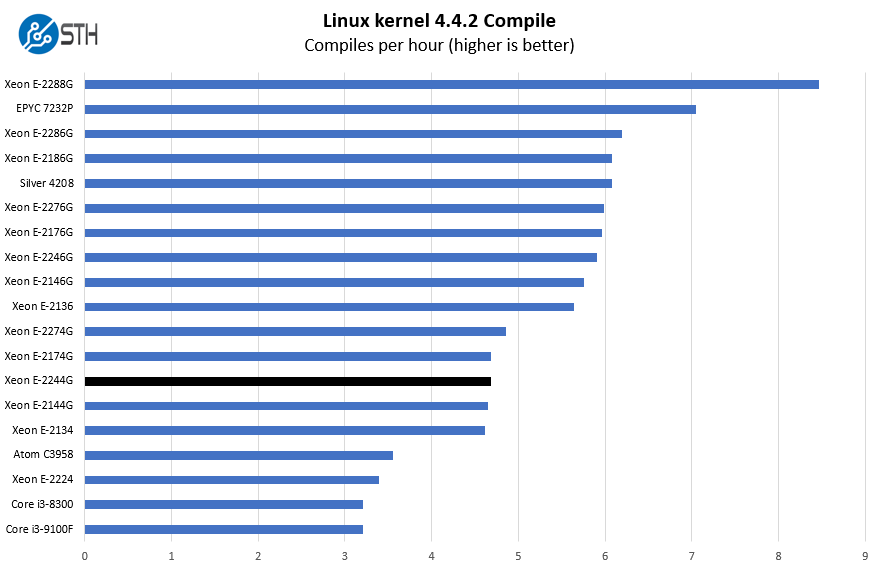
Here we see two interesting data points that we wanted to point out. First, the Xeon E-2244G chip is clearly ahead of the Xeon E-2144G. It is a smaller increment because it is only about a 5% clock speed improvement. Here, the Xeon E-2174G we had actually performed slightly better. This is despite the Xeon E-2174G having slightly higher turbo clock speeds (100MHz.) It may be a chip-to-chip variation but we would expect the two CPUs to be close. As you will see, they end up trading positions on many tests.
c-ray 1.1 Performance
We have been using c-ray for our performance testing for years now. It is a ray tracing benchmark that is extremely popular to show differences in processors under multi-threaded workloads. We are going to use our 8K results which work well at this end of the performance spectrum.
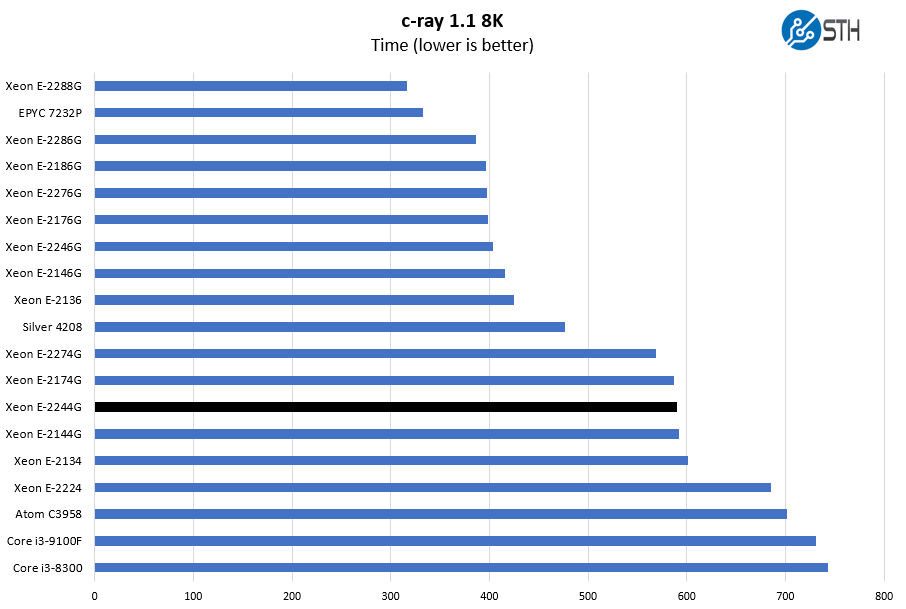
Here we can see the pattern again. When we get down to it, the biggest determinant of performance is core count here so we see the biggest changes based on that so long as clock speeds are similar.
7-zip Compression Performance
7-zip is a widely used compression/ decompression program that works cross-platform. We started using the program during our early days with Windows testing. It is now part of Linux-Bench.
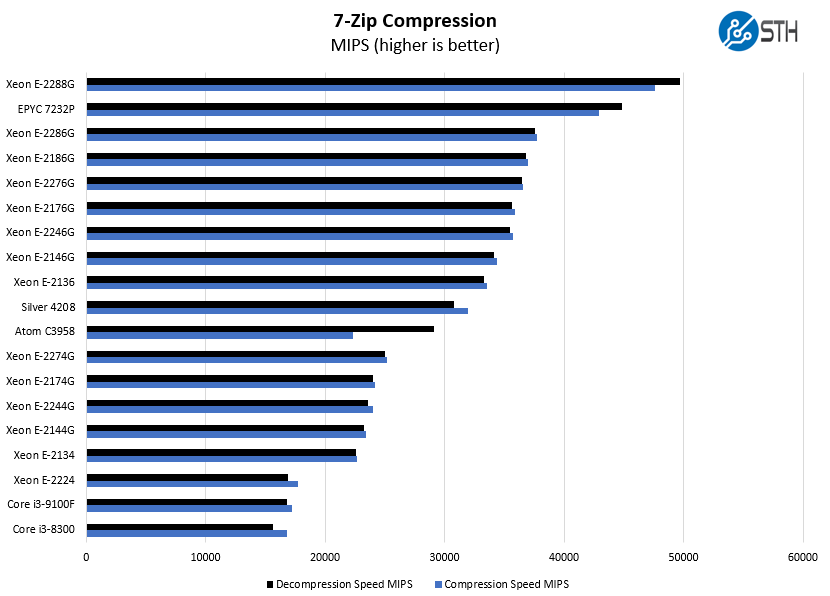
Again, this is a nice generational improvement over the Xeon E-2144G.
NAMD Performance
NAMD is a molecular modeling benchmark developed by the Theoretical and Computational Biophysics Group in the Beckman Institute for Advanced Science and Technology at the University of Illinois at Urbana-Champaign. More information on the benchmark can be found here. We are going to augment this with GROMACS in the next-generation Linux-Bench in the near future. With GROMACS we have been working hard to support Intel’s Skylake AVX-512 and AVX2 supporting AMD Zen architecture. Here are the comparison results for the legacy data set:
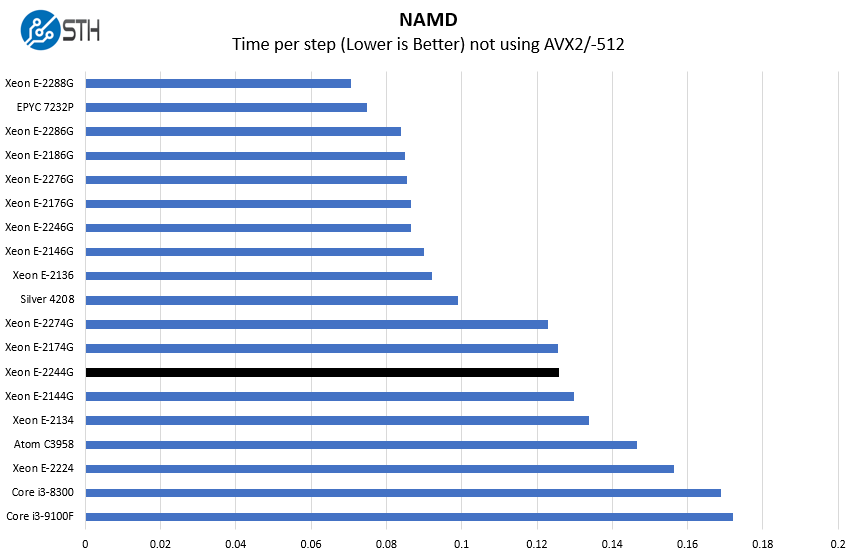
Taking a second here, we wanted to note that while this CPU is faster than the Intel Xeon E-2224 on all of these charts, there is more going on. The Xeon E-2224 does not have the iGPU that the “G” models, like the Xeon E-2244G have.
Sysbench CPU test
Sysbench is another one of those widely used Linux benchmarks. We specifically are using the CPU test, not the OLTP test that we use for some storage testing.
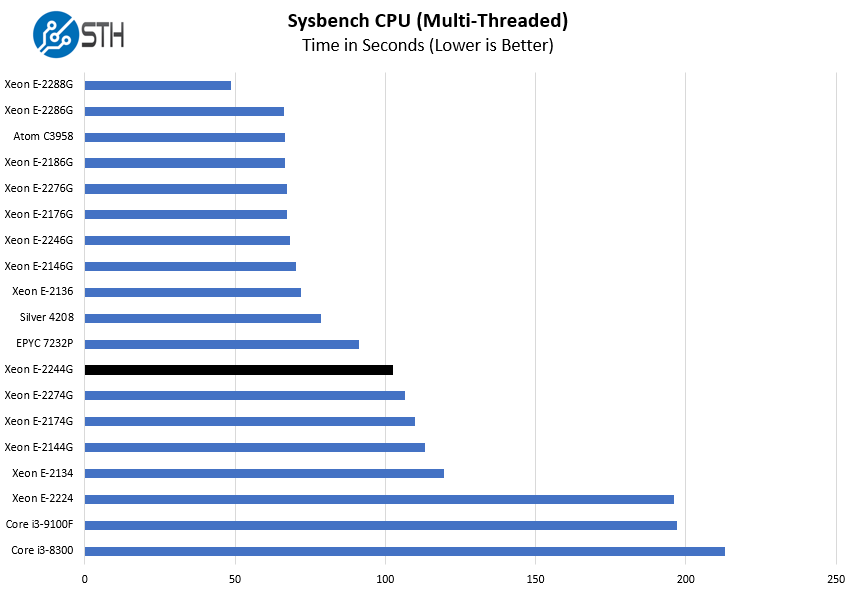
There is a fairly similar pattern here. The Xeon E-2244G performed slightly better here than expected, but all of the Xeon E-2x44G and Xeon E-2x74G are performing within a single-digit percent range.
OpenSSL Performance
OpenSSL is widely used to secure communications between servers. This is an important protocol in many server stacks. We first look at our sign tests:
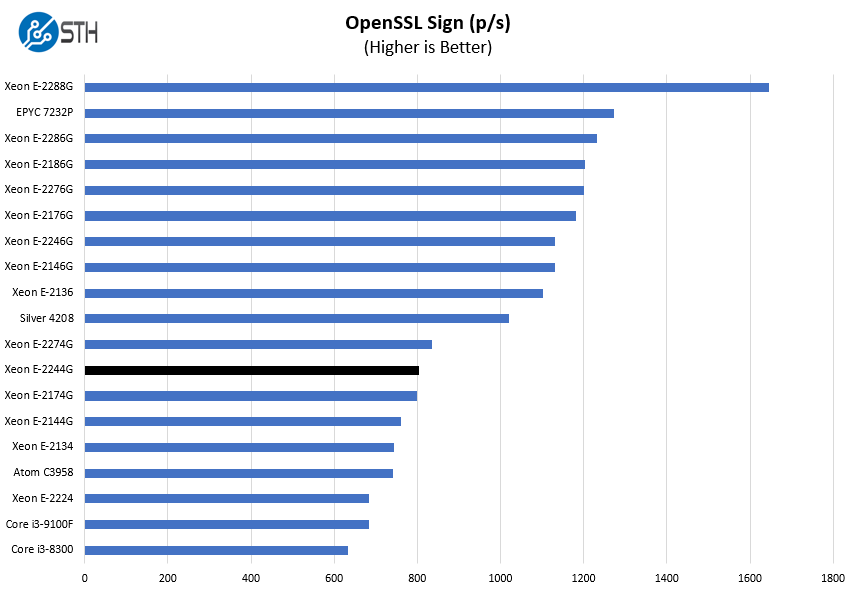
Here are the verify results:
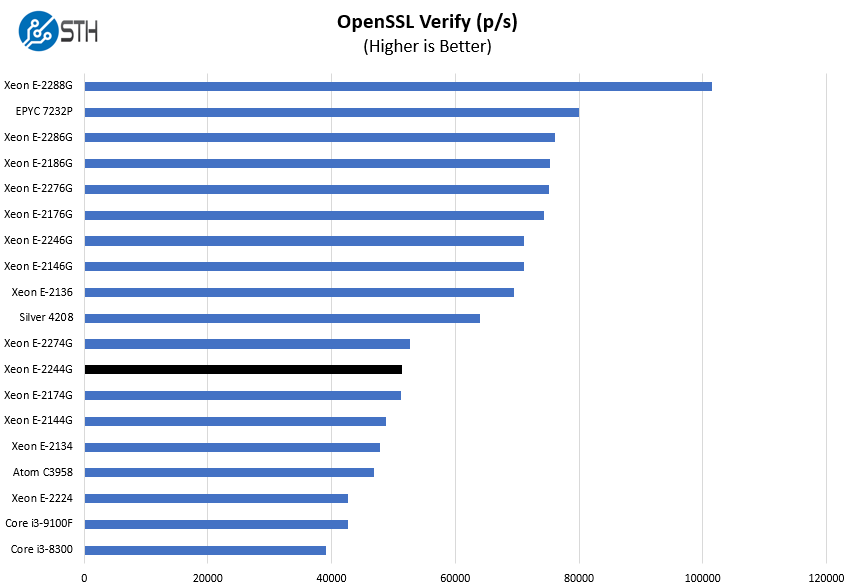
Here we can see performance besting the Xeon E-2174G. Overall, these two chips were close in performance to one another throughout.
UnixBench Dhrystone 2 and Whetstone Benchmarks
Some of the longest-running tests at STH are the venerable UnixBench 5.1.3 Dhrystone 2 and Whetstone results. They are certainly aging, however, we constantly get requests for them, and many angry notes when we leave them out. UnixBench is widely used so we are including it in this data set. Here are the Dhrystone 2 results:
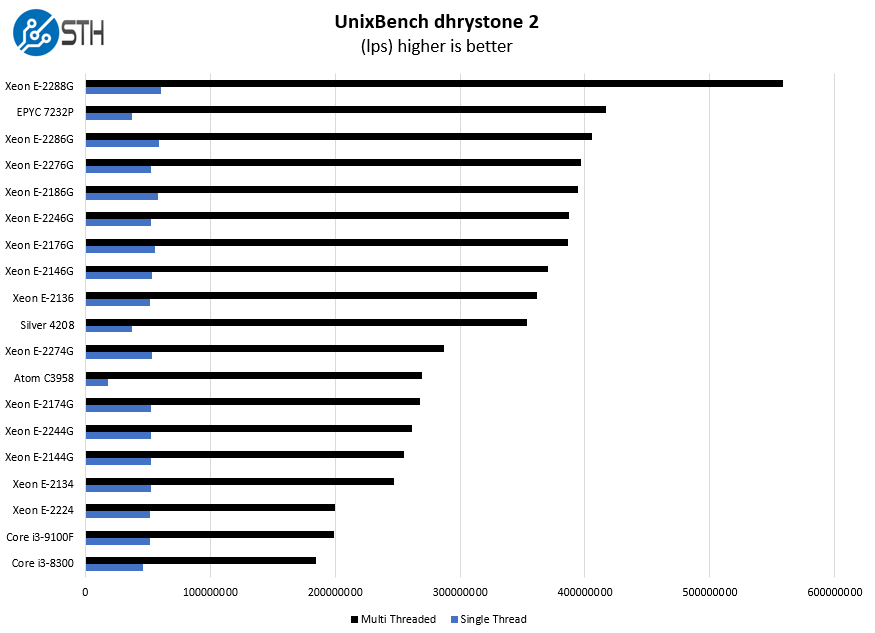
Here are the whetstone results:
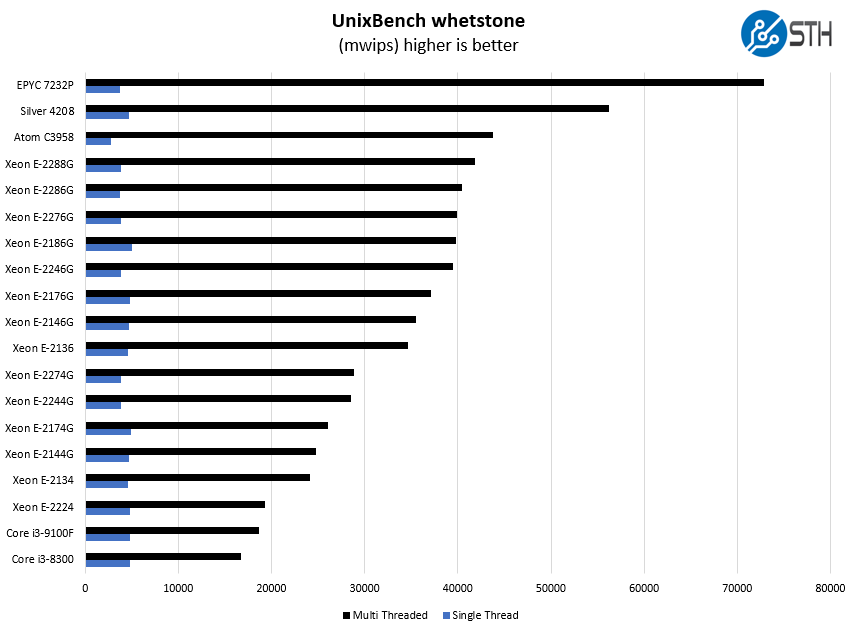
Here we have a lot of results but one can see that if you simply do not need performance, a solution like the Intel Core i3-9100(F) can provide a lot of the performance at a $100+ savings. If you are truly looking for maximum cost savings, it is a big delta, but one may opt for those savings instead of more performance.
GROMACS STH Small AVX2/ AVX-512 Enabled
We have a small GROMACS molecule simulation we previewed in the first AMD EPYC 7601 Linux benchmarks piece. In Linux-Bench2 we are using a “small” test for single and dual socket capable machines. Our medium test is more appropriate for higher-end dual and quad-socket machines. Our GROMACS test will use the AVX-512 and AVX2 extensions if available.
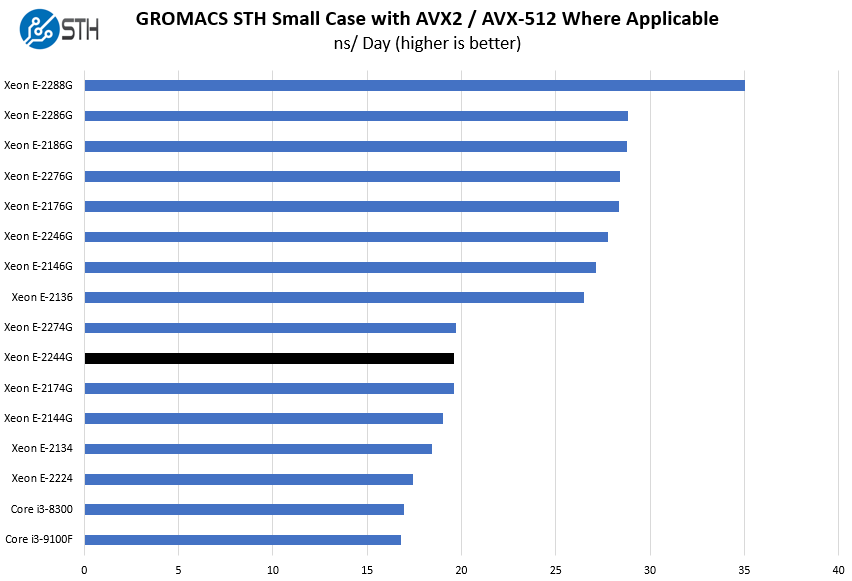
Here again, we see results in-line with similar quad-core and eight-thread Xeon E-2100 and Xeon E-2200 series parts.
Chess Benchmarking
Chess is an interesting use case since it has almost unlimited complexity. Over the years, we have received a number of requests to bring back chess benchmarking. We have been profiling systems and are ready to start sharing results:
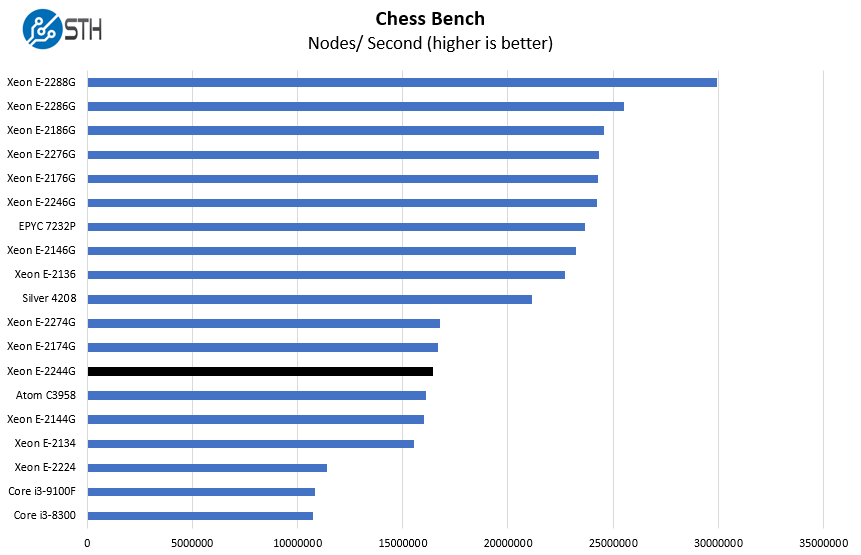
As a quick aside here, one will have seen the Xeon Silver 4208 make an appearance on a number of charts. That is on the lower end of the 2nd Gen Intel Xeon Scalable stack. Even with 8 cores, it is closer to a 6-core Xeon E-22×6 processor due to the Xeon E’s higher clock speeds. One can see more cores generally win the day but the Xeon Silver offers a much more scalable platform.
Next, we are going to have power consumption, market positioning, and our final words.




ASRock Rack:
– X570D4I-2T
– X470D4U2-2T
– X470D4U